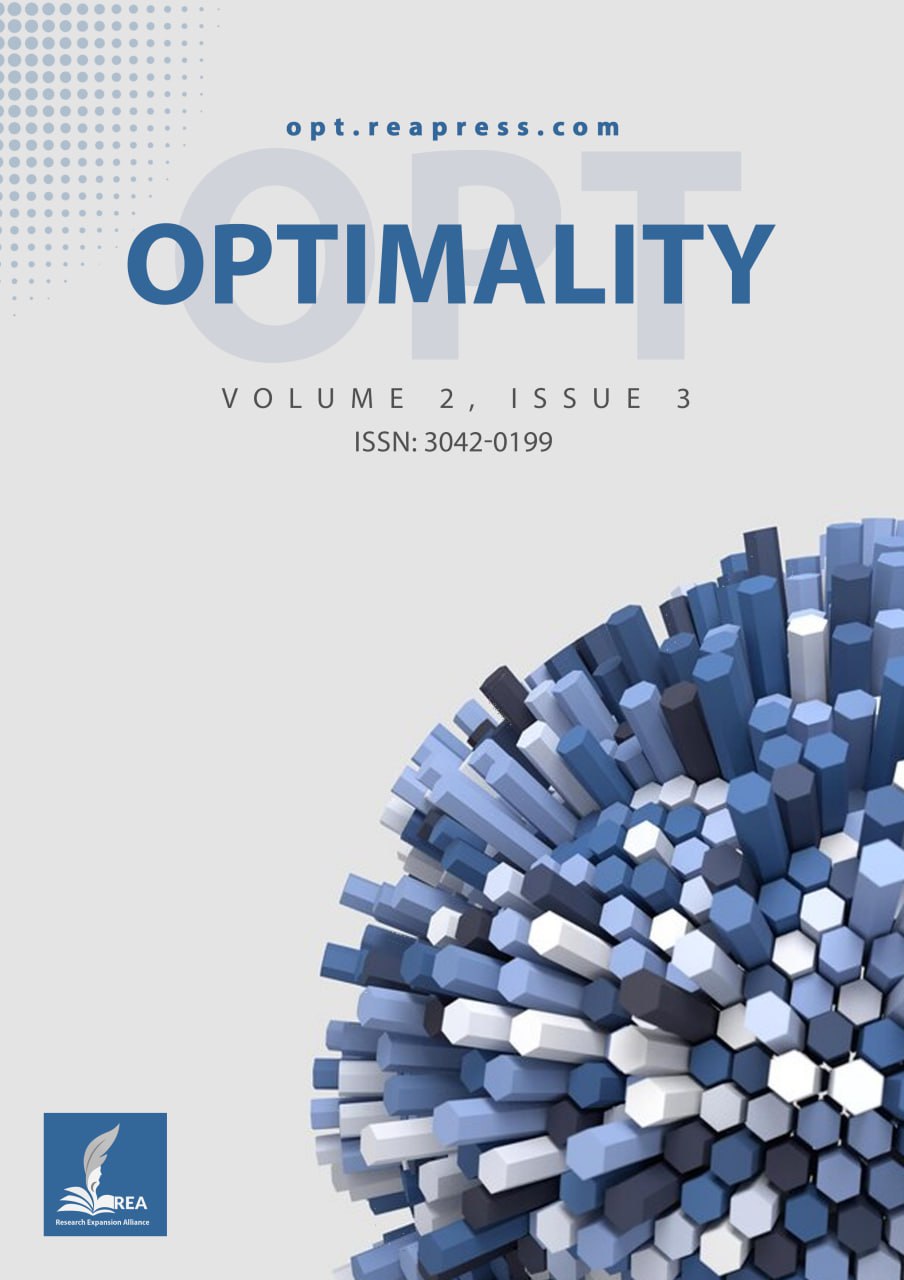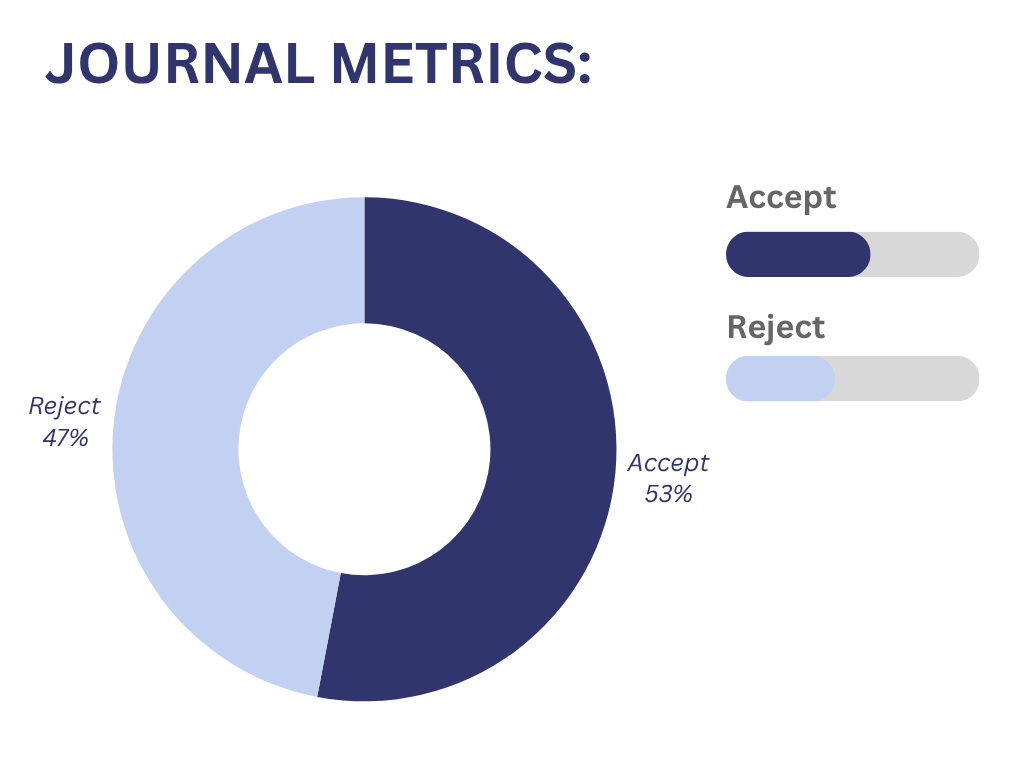Exploring the Challenges of Implementing OECD Due Diligence Practices in Supply Chains: Effects on Sustainability in Emerging Economies
Abstract
Adopting the Organization for Economic Cooperation and Development (OECD) due diligence practices in supply chains is crucial for ensuring ethical, transparent, and sustainable business operations, particularly in emerging economies. However, various socio-economic and institutional challenges hinder the effective implementation of these practices. Therefore, this study aims to identify and prioritize the key challenges faced in adopting OECD due diligence within the supply chains of emerging economies. In this study, Multi-Criteria Decision-Making (MCDM) techniques, including the Analytic Hierarchy Process (AHP), the Technique for Order of Preference by Similarity to Ideal Solution (TOPSIS), and the Preference Ranking Organization Method for Enrichment Evaluation (PROMETHEE), were applied. The integrated combinations of AHP-TOPSIS and AHP-PROMETHEE were used to verify the robustness of the study results. The study reviewed the literature to identify the prioritization criteria and challenges, and also incorporated expert input. This study selected six criteria and seventeen challenges. AHP determined ‘Severity of Impact’ and ‘institutional and regulatory’ as the most influential criteria. ‘Weak regulatory enforcement,’ ‘corruption and governance issues,’ and ‘political instability’ were identified as the top three challenges in both the AHP-TOPSIS and AHP-PROMETHEE approaches. By addressing these challenges, policymakers and industry leaders can foster a more resilient and responsible supply chain ecosystem in emerging economies. This study provides strategic insights to enhance regulatory effectiveness, stakeholder collaboration, and institutional capacity, ultimately facilitating the successful adoption of OECD due diligence guidelines.
Keywords:
OECD due diligence, Supply chain challenges, Emerging economies, Multi-criteria decision-making, SustainabilityReferences
- [1] Debnath, B., Siraj, M. T., Rashid, K. H. O., Mainul Bari, A. B. M., Karmaker, C. L., & Aziz, R. Al. (2023). Analyzing the critical success factors to implement green supply chain management in the apparel manufacturing industry: implications for sustainable development goals in the emerging economies. Sustainable manufacturing and service economics, 2, 100013. https://doi.org/10.1016/j.smse.2023.100013
- [2] Moayad, S. J., Kamal, S. H. M., Sajjadi, H., Vameghi, M., Harouni, G. G., & Alamdari, S. M. (2021). Child labor in Tehran, Iran: abuses experienced in work environments. Child abuse & neglect, 117, 105054. https://doi.org/10.1016/j.chiabu.2021.105054
- [3] Takala, J., Hämäläinen, P., Sauni, R., Nygård, C. H., Gagliardi, D., & Neupane, S. (2024). Global, regional-and country-level estimates of the work-related burden of diseases and accidents in 2019. Scandinavian journal of work, environment & health, 50(2), 73. https://pmc.ncbi.nlm.nih.gov/articles/PMC10927068/
- [4] Paltsev, S., Morris, J., Kheshgi, H., & Herzog, H. (2021). Hard-to-abate sectors: the role of industrial carbon capture and storage (CCS) in emission mitigation. Applied energy, 300, 117322. https://doi.org/10.1016/j.apenergy.2021.117322
- [5] Elliott, K. A. (2022). Handbook on globalisation and labour standards. Edward elgar publishing. https://books.google.com/books?id=mq1jEAAAQBAJ
- [6] OECD. (2018). OECD due diligence guidance for responsible business conduct. https://www.oecd.org/en/publications/oecd-due-diligence-guidance-for-responsible-business-conduct_15f5f4b3-en.html
- [7] Felbermayr, G., Godart, O., Langhammer, R. J., & Sandkamp, A. (2021). Opportunities and risks of a due diligence law. https://impuls-stiftung.de/wp-content/uploads/2022/06/Opportunities-and-risks-of-a-due-diligence-law.pdf
- [8] Hess, D. (2021). The management and oversight of human rights due diligence. American business law journal, 58(4), 751–798. https://doi.org/10.1111/ablj.12197
- [9] Schilling-Vacaflor, A., & Lenschow, A. (2023). Hardening foreign corporate accountability through mandatory due diligence in the European Union? New trends and persisting challenges. Regulation & governance, 17(3), 677–693. https://doi.org/10.1111/rego.12402
- [10] Villiers, C. (2022). New directions in the european union’s regulatory framework for corporate reporting, due diligence and accountability: the challenge of complexity. European journal of risk regulation, 13(4), 548–566. https://doi.org/10.1017/err.2022.25
- [11] Wilhelm, M. (2024). Mandatory due diligence legislation: a paradigm shift for the governance of sustainability in global value chains? Journal of international business policy, 7(4), 459–465. https://doi.org/10.1057/s42214-024-00193-4
- [12] Bari, A. B. M. M., Siraj, M. T., Paul, S. K., & Khan, S. A. (2022). A hybrid multi-criteria decision-making approach for analysing operational hazards in heavy fuel oil-based power plants. Decision analytics journal, 3, 100069. https://doi.org/10.1016/j.dajour.2022.100069
- [13] Turcksin, L., Bernardini, A., & Macharis, C. (2011). A combined AHP-PROMETHEE approach for selecting the most appropriate policy scenario to stimulate a clean vehicle fleet. Procedia - social and behavioral sciences, 20, 954–965. https://doi.org/10.1016/j.sbspro.2011.08.104
- [14] Smit, L., Holly, G., McCorquodale, R., & Neely, S. (2021). Human rights due diligence in global supply chains: evidence of corporate practices to inform a legal standard. The international journal of human rights, 25(6), 945–973. https://doi.org/10.1080/13642987.2020.1799196
- [15] Menon, R. R., & Ravi, V. (2022). Using AHP-TOPSIS methodologies in the selection of sustainable suppliers in an electronics supply chain. Cleaner materials, 5, 100130. https://doi.org/10.1016/j.clema.2022.100130
- [16] Ul Islam, S. M., Khan, S., Ahmad, H., Ur Rahman, M. A., Tomar, S., & Khan, M. Z. (2022). Assessment of challenges and problems in supply chain among retailers during COVID-19 epidemic through AHP-TOPSIS hybrid MCDM technique. Internet of things and cyber-physical systems, 2, 180–193. https://doi.org/10.1016/j.iotcps.2022.10.001
- [17] Haji, M., Kerbache, L., & Al-Ansari, T. (2022). Evaluating the performance of a safe insulin supply chain using the AHP-TOPSIS approach. Processes, 10(11), 2203. https://doi.org/10.3390/pr10112203
- [18] Amallynda, I., Hidayatulloh, R. A. T., & Utama, D. M. (2022). Supplier selection utilizing fuzzy-AHP and promethee: a case study in garment industry. AIP conference proceedings (Vol. 2453, p. 020041). AIP Publishing LLC. https://doi.org/10.1063/5.0094601
- [19] Isa, M. A. M., Saharudin, N. S., Anuar, N. B., & Mahad, N. F. (2021). The application of ahp-promethee ii for supplier selection. Journal of physics: conference series (Vol. 1988, p. 012062). IOP Publishing. https://doi.org/10.1088/1742-6596/1988/1/012062
- [20] Karanam, M., Lanka, K., Pattela, S. N., & Manupati, V. K. (2022). Investigating the key enablers in perishable food supply chain using dematel and ahp—promethee. International conference on data analytics in public procurement and supply chain (pp. 217–237). Singapore: Springer Nature Singapore. https://doi.org/10.1007/978-981-99-1019-9_22
- [21] Siems, M. M., & Alvarez-Macotela, O. (2014). The OECD principles of corporate governance in emerging markets: a successful example of networked governance? In Networked governance, transnational business and the law (pp. 257–284). Berlin, Heidelberg: Springer Berlin Heidelberg. https://doi.org/10.1007/978-3-642-41212-7_12
- [22] Mishra, B., & Kumar, A. (2021). How does regulatory framework impact sectoral performance? A systematic literature review. International journal of productivity and performance management, 72(5), 1419–1444. https://doi.org/10.1108/IJPPM-07-2021-0398
- [23] Samans, R. (2023). Human-centred national economic policy: institutionalizing inclusion, sustainability and resilience in domestic economic governance. Human-centred economics: the living standards of nations (pp. 131–234). Cham: Springer International Publishing. https://doi.org/10.1007/978-3-031-37435-7_5
- [24] Martin-Ortega, O. (2022). Transparency and human rights in global supply chains: from corporate-led disclosure to a right to know. In Research handbook on global governance, business and human rights. Cheltenham, UK: Edward Elgar Publishing. https://doi.org/10.4337/9781788979832.00012
- [25] Siraj, T., Haque, R. ., Chowdhury, S. ., Islam, N., Biswas, B., & Chowdhury, K. H. (2024). Analyzing challenges in enterprise resource planning (ERP) implementation in a safety inspection company: an IVT2IF DEMATEL approach. Optimality, 1(2), 205-223. https://doi.org/10.22105/opt.v1i2.50
- [26] Zolghadr-Asli, B., Bozorg-Haddad, O., Enayati, M., & Chu, X. (2021). A review of 20-year applications of multi-attribute decision-making in environmental and water resources planning and management. Environment, development and sustainability, 23(10), 14379–14404. https://doi.org/10.1007/s10668-021-01278-3
- [27] Siraj, M. T., Debnath, B., Payel, S. B., Bari, A. B. M. M., & Islam, A. R. M. T. (2023). Analysis of the fire risks and mitigation approaches in the apparel manufacturing industry: Implications toward operational safety and sustainability. Heliyon, 9(9). https://doi.org/10.1016/j.heliyon.2023.e20312
- [28] Ikram, M., Sroufe, R., & Zhang, Q. (2020). Prioritizing and overcoming barriers to integrated management system (IMS) implementation using AHP and G-TOPSIS. Journal of cleaner production, 254, 120121. https://doi.org/10.1016/j.jclepro.2020.120121
- [29] Kumar, V., Vrat, P. & Shankar, R. (2021). Prioritization of strategies to overcome the barriers in industry 4.0: a hybrid MCDM approach. Opsearch, 58, 711–750. https://doi.org/10.1007/s12597-020-00505-1
- [30] Ghadge, A., Er Kara, M., Mogale, D. G., Choudhary, S., & Dani, S. (2021). Sustainability implementation challenges in food supply chains: a case of UK artisan cheese producers. Production planning & control, 32(14), 1191–1206. https://doi.org/10.1080/09537287.2020.1796140
- [31] Bukhsh, F. A., Bukhsh, Z. A., & Daneva, M. (2020). A systematic literature review on requirement prioritization techniques and their empirical evaluation. Computer standards & interfaces, 69, 103389. https://doi.org/10.1016/j.csi.2019.103389
- [32] Werning, J. P., & Spinler, S. (2020). Transition to circular economy on firm level: Barrier identification and prioritization along the value chain. Journal of cleaner production, 245, 118609. https://doi.org/10.1016/j.jclepro.2019.118609
- [33] Ohene, E., Chan, A. P. C., & Darko, A. (2022). Prioritizing barriers and developing mitigation strategies toward net-zero carbon building sector. Building and environment, 223, 109437. https://doi.org/10.1016/j.buildenv.2022.109437
- [34] Schilling-Vacaflor, A., & Gustafsson, M. T. (2024). Towards more sustainable global supply chains? Company compliance with new human rights and environmental due diligence laws. Environmental politics, 33(3), 422–443. https://doi.org/10.1080/09644016.2023.2221983
- [35] Mackie, C. (2021). Due diligence in global value chains: Conceptualizing ‘adverse environmental impact’. Review of European. Comparative & international environmental law, 30(3), 297–312. https://doi.org/10.1111/reel.12406
- [36] Ofodile, U. E. (2023). ESG, supply chain due diligence and food systems transformation: changes and challenges. Research handbook on international food law (pp. 291–314). Edward elgar publishing. https://doi.org/10.4337/9781800374676.00027
- [37] Kumadey, G., & Agbenyegah, A. T. (2024). Stakeholder engagement in ghana’s pharmaceutical policy for supply chain sustainability. Acta u. danubius jur, 20, 166. https://heinonline.org/HOL/LandingPage?handle=hein.journals/actdaj2024&div=21&id=&page=
- [38] Gervais, E., Kleijn, R., Nold, S., & van der Voet, E. (2023). Risk-based due diligence in supply chains: the case of silver for photovoltaics. Resources, conservation and recycling, 198, 107148. https://doi.org/10.1016/j.resconrec.2023.107148
- [39] Saaty, T. L. (1977). A scaling method for priorities in hierarchical structures. Journal of mathematical psychology, 15(3), 234–281. https://doi.org/10.1016/0022-2496(77)90033-5
- [40] Saaty, T. L. (1990). How to make a decision: The analytic hierarchy process. European journal of operational research, 48(1), 9–26. https://doi.org/10.1016/0377-2217(90)90057-I
- [41] Hwang, C.-L., & Yoon, K. (1981). Methods for multiple attribute decision making. In multiple attribute decision making: methods and applications a state-of-the-art survey (pp. 58–191). Berlin, Heidelberg: Springer Berlin Heidelberg. https://doi.org/10.1007/978-3-642-48318-9_3
- [42] Siraj, M. T., Huda, M. N., Sarkar, A. S., Hoque Fakir, M. R., Hasan, M. K., Nazim, A. I., ... & Kabir, M. A. (2024). Towards sustainable energy transitions: ranking lower-middle-income economies on the accessibility to affordable and clean energy. Environmental engineering & management journal (EEMJ), 23(3). https://www.researchgate.net/profile/Md-Tanvir-Siraj-2/publication/380870376
- [43] Siraj, M. T., Islam, N. A. M., Ahmed, R., Islam, M. F. Al, Islam, M. S., Kabir, A., & Emon, M. S. A. (2023). Selection of air compressor for pharmaceuticals: An approach with TOPSIS. AIP conference proceedings, 2825(1), 40004. https://doi.org/10.1063/5.0171408
- [44] Ziemba, P., & Gago, I. (2022). Uncertainty of preferences in the assessment of supply chain management systems using the promethee method. Symmetry, 14(5), 1043. https://doi.org/10.3390/sym14051043
- [45] Agrawal, N. (2022). Multi-criteria decision-making toward supplier selection: exploration of PROMETHEE II method. Benchmarking: an international journal2022, 29(7), 2122–2146. https://doi.org/10.1108/BIJ-02-2021-0071
- [46] Siraj, M. T., Debnath, B., Kumar, A., Bari, A. M., Samadhiya, A., & Payel, S. B. (2023). Evaluating barriers to sustainable boiler operation in the apparel manufacturing industry: implications for mitigating operational hazards in the emerging economies. Plos one, 18(4), e0284423. https://doi.org/10.1371/journal.pone.0284423
- [47] Amirapu, A., & Gechtery, M. (2024). Indian labor regulations and the cost of corruption: evidence from the firm size distribution. Boston univercity. https://www.bu.edu/econ/files/2015/05/Amirapu-and-Gechter-Size-Based-Regulations.pdf
- [48] Bjarnegård, E. (2020). Introduction: development challenges in myanmar: political development and politics of development intertwined. The european journal of development research, 32(2), 255–273. https://doi.org/10.1057/s41287-020-00263-2
- [49] Mancini, L., & Sala, S. (2018). Social impact assessment in the mining sector: Review and comparison of indicators frameworks. Resources policy, 57, 98–111. https://doi.org/10.1016/j.resourpol.2018.02.002
- [50] Brandenburg, M., Bizuneh, B., Teklemedhin, T. B., & Woubou, A. M. (2022). Sustainability in ethiopian textile and apparel supply chains. In Africa and sustainable global value chains (pp. 195–215). Cham: Springer International Publishing. https://doi.org/10.1007/978-3-030-78791-2_9
- [51] Muhammad, A., Ibitomi, T., Amos, D., Idris, M., & Ahmad Ishaq, A. (2023). Comparative analysis of sustainable finance initiatives in Asia and Africa: a path towards global sustainability. Glob. sustain. res2023, 2(3), 33–51. https://doi.org/10.56556/gssr.v2i3.559
- [52] Umutoniwase, R. (2024). Strengthening investment climates through governance reforms: insights from rwanda. KAS african law study library, 11(3), 381–395. https://www.nomos-elibrary.de/document/download/pdf/uuid/04b31fa4-64df-3f9e-93cd-8576def13d78



